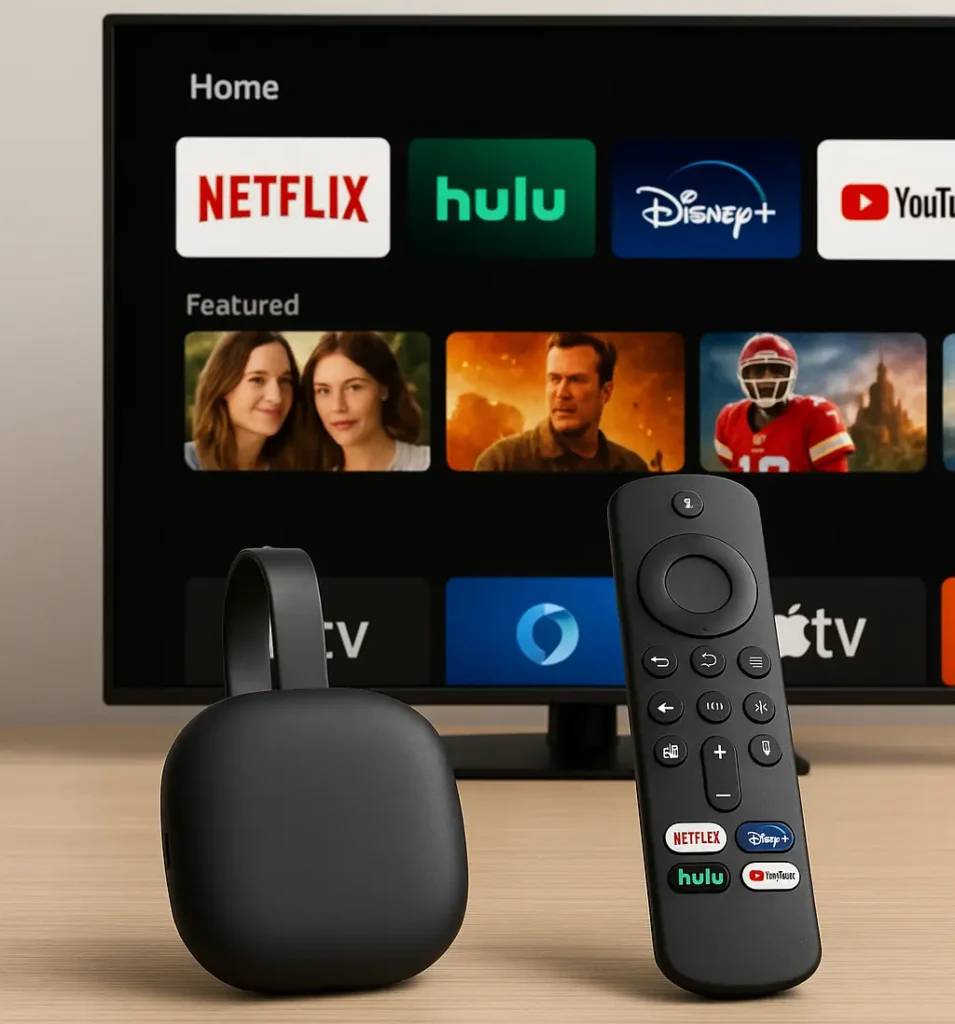

Streaming Media Player
A streaming media player allows you to access a wide range of digital content—TV shows, movies, live sports, and more—by connecting your television to the internet. Devices like Roku, Amazon Fire TV Stick, Apple TV, and Google Chromecast give you access to streaming platforms such as Netflix, Hulu, Disney+, and YouTube, all from a single interface. These compact devices often support 4K and HDR for high-quality visuals and come with voice-enabled remotes for easy navigation.
Some streaming players also integrate with smart home ecosystems, enabling control through Alexa, Google Assistant, or Siri. When selecting a media player, consider compatibility with your TV’s resolution, the types of apps you use most often, and additional features like screen mirroring or gaming. A good streaming device can turn any TV—smart or not—into a powerful entertainment hub.

Smart TV Interface
Modern smart TVs come with built-in operating systems—like Tizen (Samsung), webOS (LG), Android TV (Sony, TCL), or Roku TV—that allow users to access streaming apps, browse content, and control settings without external devices. These platforms consolidate your entertainment into one interface, enabling seamless switching between live TV, on-demand services, and gaming apps. Some smart TVs also support screen casting and feature voice-enabled remotes for hands-free navigation.
Smart TV interfaces are regularly updated, improving performance and app support over time. When buying a smart TV, consider the interface’s responsiveness, available apps, and how well it integrates with your ecosystem (e.g., Alexa, Google Home, or Apple HomeKit). A well-designed smart interface transforms how you interact with television, making it easier and more personalized.

Cable TV Set-Top Box
A cable TV set-top box is a dedicated device that connects to your television to provide access to cable channels, on-demand content, and digital program guides. Offered by service providers like Xfinity, Spectrum, or DirecTV, these boxes often come with DVR capabilities, allowing you to record live shows and watch them later. Many newer models support HD or 4K resolution and feature interactive menus, parental controls, and access to premium channels like HBO or Showtime.
Some set-top boxes now include apps for streaming content, blurring the line between traditional cable and internet-based services. When choosing or upgrading a set-top box, look for features such as storage capacity, voice remote compatibility, and user-friendly interface design. It’s a convenient solution for those who prefer a blend of live TV and digital features.

TV Channel Subscription Services
TV channel subscription services allow you to stream live and on-demand content from popular networks without a traditional cable package. Platforms like Hulu + Live TV, YouTube TV, Sling TV, and fuboTV offer customizable channel bundles that include sports, news, entertainment, and local channels. These services are compatible with most smart TVs and streaming devices, giving users the flexibility to watch from virtually anywhere.
Subscribers can often pause or rewind live TV, store shows with cloud DVR, and personalize profiles for different household members. The lack of long-term contracts also makes switching providers or adjusting plans easy. When choosing a service, consider the channels offered, DVR limits, number of simultaneous streams, and device compatibility. It’s a modern, flexible way to watch live TV tailored to your viewing habits.

4K Ultra HD Channels
With the rise of 4K TVs, many broadcasters and streaming services now offer Ultra HD channels that deliver incredibly sharp, detailed images and vibrant colors. Sports networks, movie channels, and streaming platforms like Netflix, Amazon Prime Video, and Apple TV+ feature a growing library of 4K content, often paired with HDR (High Dynamic Range) for enhanced realism and depth.
Accessing 4K channels may require specific equipment—such as a 4K-compatible set-top box, a high-speed internet connection, or a premium subscription plan. Not all content is available in native 4K, but the selection is expanding rapidly. When setting up for 4K viewing, make sure your HDMI cables and ports support HDMI 2.0 or 2.1 standards to maximize picture quality. 4K channels take full advantage of your high-resolution TV, delivering a true cinematic experience at home.

Copyright 2025, All rights reserved.